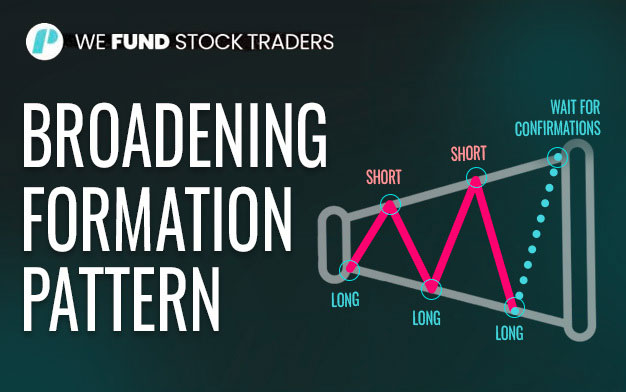
Here are the what, the how, and the who
Swing trading is a popular trading strategy that involves taking advantage of short-term price movements in stocks. Unlike day traders and long-term investors, swing traders aim to profit by taking advantage of price movements within a few days or even a few weeks.
In the following article, we’ll quickly examine the reasons that so many traders choose swing trading as their favorite style, we’ll explore the main factors to consider in order to swing trade successfully and we’ll explain how swing traders go about picking their stock. So… let’s get started!
Is swing trading right for you?
Before answering questions such as this, it is essential for you to analyze and understand your current trading style. You need to Identify your risk appetite, know your exact time availability, and, most importantly, you need to clarify your goals and objectives.
Even if it’s based on a larger timescale than day trading, swing trading still requires active monitoring of the market, as well as quick decision-making. It is crucial for you to have a clear trading plan and you also must have a specific method on which to base your entry and exit price levels, your stop-loss orders, and your profit targets.
If this is at all similar to what you are already doing then yes, sure, swing trading could be an excellent style of trading for you too.
So why do so many traders choose to swing trade?

Swing trading is a common trading method utilized by many financial market participants. Swing trading allows traders to retain positions for several days to weeks, as opposed to day trading, which compels traders to execute trades inside a single trading day. This is probably the factor number one that makes swing trading so appealing to so many traders but… there is more.
Here are three more great reasons:
Flexibility and Time Commitment
Another reason traders opt for swing trading is the flexibility it provides.
Swing traders aren’t tied to their screens all day and have, therefore, more time for all other things life is made of.
Because swing trading strategies typically involve identifying potential price swings over the space of days, traders often use technical analysis to identify entry and exit points in advance and are then able to let their trades run, making swing trading less demanding in terms of time commitment than day trading.
Lower level of stress
Due to the fast speed and continual decision-making required in day trading, traders often found it more stressful than swing trading which, on the other hand, offers a slower pace trading environment and… more time to think.
Swing traders have more time to study markets and make sound decisions. They can also avoid being negatively impacted by unexpected market movements because they often use stop-loss orders to limit possible losses more often than day traders do.
Better Risk Management
Swing trading offers traders the ability to manage risk more effectively compared to day trading. By holding positions for a longer duration, swing traders typically use wider stop-loss levels and take-profit targets. This allows them to manage and withstand short-term market fluctuations and reduces the probability of being stopped out too early. Furthermore, swing traders can adapt their strategies to changing market conditions, allowing for more dynamic risk management.
How do swing traders go about picking the right stock?
Whilst swing traders use similar techniques as day traders to set their entry and exit points (i.e. technical indicators and oscillators, chart and patterns analysis, etc.), there are differences in the methods they use to pick their stock to trade.
When choosing stock, Swing traders must pay particular attention to these four important factors:
Liquidity level
Liquidity refers to the ease with which you can buy or sell a stock without significantly affecting its price. Or at least, that’s what it means if you are an institutional trader with a huge account. For retail traders, this usually means looking for stocks with a high average trading volume, as this ensures there are enough buyers and sellers in the market and a decent level of volume and volatility.
Price trends analysis
To choose stocks for swing trading, analyze price trends to identify potential opportunities. Technical analysis tools, such as moving averages, support and resistance levels, and chart patterns, can help traders in detecting current and future trends.
Look for stocks that have recently seen high levels of volatility, showing signs of upward or downward momentum and, once your bias is formed, use technical and fundamental analysis to set your entry and exit points.
Volatility level
Volatility is a crucial aspect of swing trading. Higher volatility indicates larger price swings, which can offer more significant profit potential. However, higher volatility also implies increased risk. Stocks with significant news, earnings releases, or events scheduled in the near future, tend to be more volatile than others. Consider the volatility of a stock based on historical price movements and news flow to select the suitable ones for your swing trading.
Market News
Keep up to date on market news, economic data, and company-specific events. News and events can have a big impact on the price of a company, generating chances for swing traders. Follow financial news websites, study corporate earnings reports, and keep an eye out for macroeconomic issues that may influence market direction. Being current on market knowledge will allow you to make more informed selections when choosing stocks for swing trading.
Swing Trading Conclusion
If you want to trade stock as a swing trader, you must remember that it requires a combination of technical and fundamental analysis, market trend evaluation, risk management, and being always up to date on market news.
By following the concept described in this article, you will be better equipped to spot potential swing trading opportunities and make informed decisions.
Remember that practice, patience, and continual learning are essential for success in swing trading and all other types of trading.
Hope this helps
Trade on!
If you liked this post make sure to share it!






